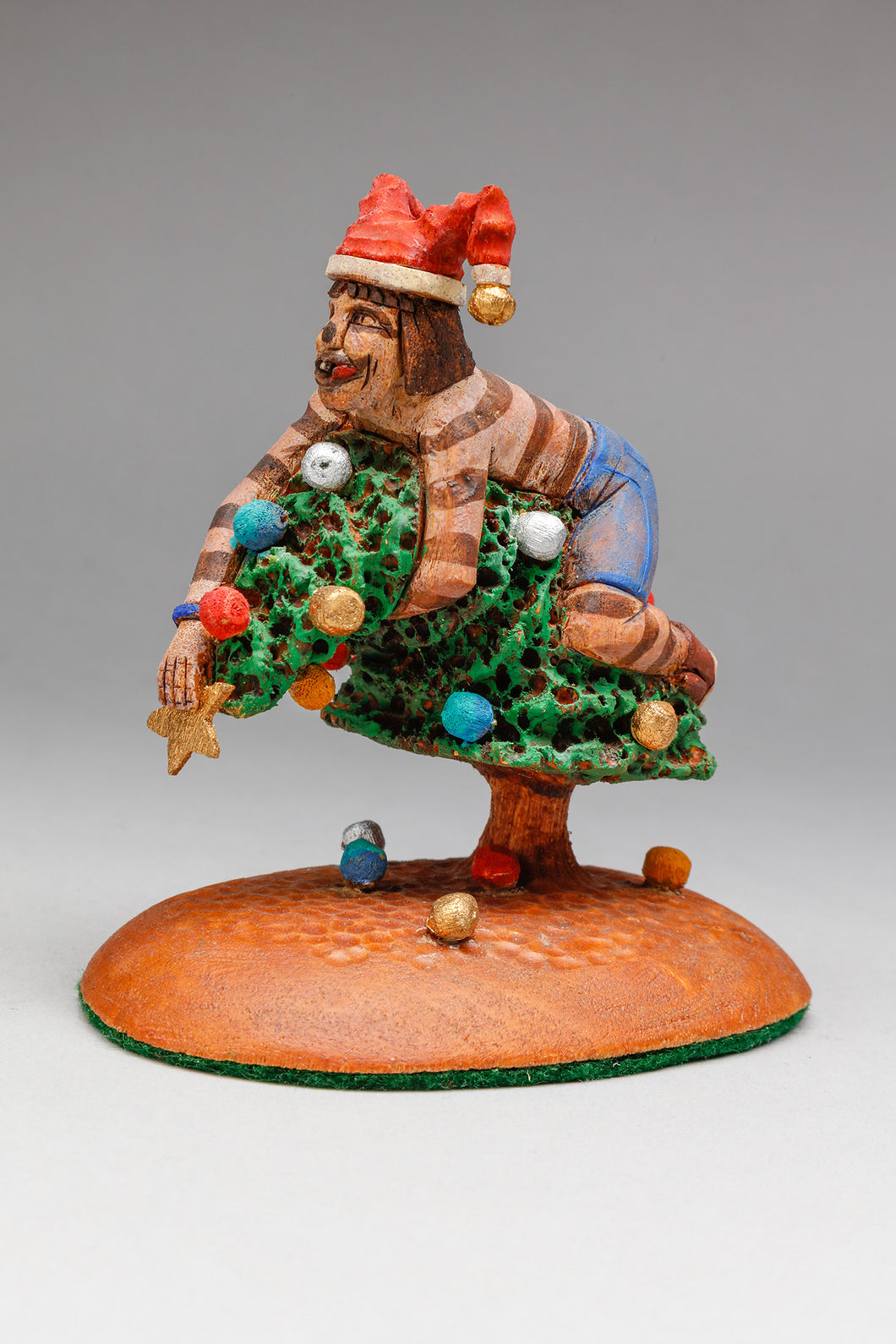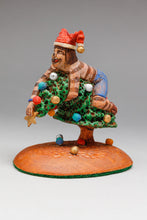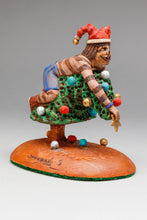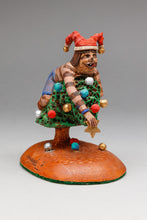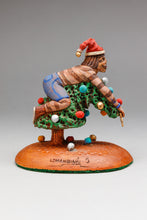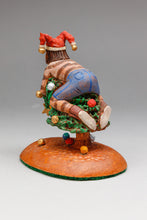Miniature Koshare Decorating Christmas Tree by Alfred Lomahquahu, Hopi
Regular price
$1,200.00
$950.00
Sale
Miniature Koshare Decorating Christmas Tree
by Alfred Lomahquahu, Hopi
cotton wood, pigment
4" high x 3" wide x 4" deep
Koshare is a sacred clown of the Hopi, one that you’re likely to see at Katsina ceremonies. He is one of several clowns, which are sometimes called jesters or tricksters. He is a powerful figure and important to the community.
If you’re in the presence of a Koshare, he is often making noise with a rattle and a drum. The Hopi religion associates him with fertility, sun, rain and corn. It is believed that these things give him power. He also has the double role of characterizing a paranormal spirit and being a society organizer. To involve the audience in his antics, he likes to imitate their behavior and include them in amusing skits.
Alfred "Bo" Lomahquahu was born at Keams Canyon, Arizona in April, 1964. He was raised in the small Hopi village of Bacavi, high atop Third Mesa, in Northern Arizona. He learned early the wisdom of accepting and following his elder's counsel. Advice given him by one grandfather, a Hopi medicine man, to travel and gain new experiences, was particularly influential in the shaping of Alfred's life and principles.
As a direct result of that advice, he departed his homeland and attended a boarding school in Riverside, California. After completion of his formal education, Alfred joined the Marines, and for the next six years, he traveled extensively. As he observed other cultures, Alfred developed a deeper appreciation for the Hopi's simple way of life.
A short while after his return to the States, an unfinished kachina was given to him to complete. His first kachina was so well received that he decided to pursue carving as his vocation. From that point, Alfred's destiny became clear. Today his kachinas are still well received and admired as evidenced by his numerous awards.
In each of his dolls, the spiritual element is always present. Couples with that element, Alfred does his utmost to give good form and outstanding physical characteristics to each finished piece. He is always hopeful that each of his kachinas will eventually grace a home where good feelings abound, for the underlying purpose of the kachina is to promote harmony.
Ten hour days are the norm for Alfred, but he enjoys his "work" and is happy with it. With each passing day, as he patiently toils, Alfred attempts to instill those long ago, sage words of his grandfather, within his own children.
Alfred continues to create masterfully done pieces of art for an ever growing audience of ardent fans, loyal supporters, and avid kachina collectors.

